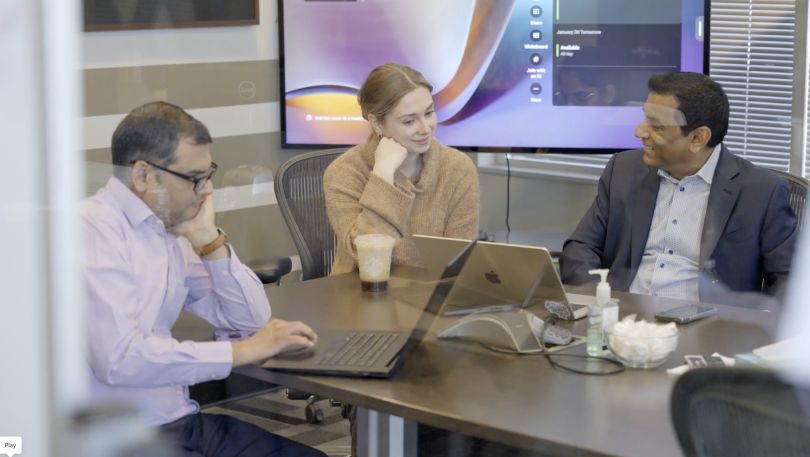Sometimes getting projects started is better than getting them perfect — or at least that’s what Abhishek Srivastava, director of software engineering at Fulcrum GT, has come to believe.
“That mindset shifted how I approached product development,” Srivastava said. “It changed how I built things. I started iterating faster, focusing on real-world utility instead of waiting for the ‘perfect’ solution.”
When Srivastava joined Fulcrum GT as a senior software engineer, a mentor pushed him to strip problems to their core and focus on fast, actionable solutions. That habit — of reducing complexity to get something working — has stayed with him as he’s taken on broader responsibilities. Now, as director, he uses that same lens to balance technical trade-offs, team velocity and long-term architecture.
“The mix of mentoring and systems-level thinking I developed earlier has been essential here not just to scale execution but to align teams around long-term goals,” Srivastava said.
Today, Srivastava attributes his leadership approach to the mentorship, autonomy and support he received early on at Fulcrum GT. Built In spoke with him about how working at the SaaS company has made all the difference in his impressive career journey.
Fulcrum GT provides an innovative end-to-end digital business platform for the legal and professional services markets.
Since joining Fulcrum GT, how have you been able to grow your skills, and what resources have helped you do this?
Since joining, I’ve expanded my skills across the full product lifecycle, gaining exposure not just to engineering but also to upstream activities like sales, requirement gathering and user feedback loops. Sitting in on client calls, for example, helped me internalize pain points that aren’t obvious from tickets alone. That directly influenced how I approach product design, leading to features that preempt common failure modes or confusion.
On the technical side, deepening my understanding of system design was critical. I leaned heavily on architectural reviews, codebase deep dives and discussions with senior peers. One consistent principle I adopted was the KISS philosophy (Keep It Simple, Stupid), which I applied to reduce complexity in a major data pipeline overhaul, and across all subsequent products and features. That not only improved maintainability but made it easier for newer team members to contribute without a steep learning curve.

What roles have you held at the company since joining, and what is your current role? What skills have you developed that help you lean into each role?
I joined as a senior software engineer where I focused on delivering core features and improving system reliability. That role sharpened my technical problem-solving and deepened my understanding of the product’s architecture which laid the groundwork for broader ownership.
As I moved into an engineering manager role, I shifted from individual contribution to team-level outcomes. I learned to balance delivery with people management developing skills in prioritization, delegation and coaching. It was also where I began working cross-functionally aligning engineering goals with product and business objectives.
In my current role as director of software engineering, I oversee multiple teams across products, guide architecture for new initiatives and drive integration strategies across organization boundaries. The mentoring and systems thinking I developed earlier have been essential here not just to scale execution but to align teams around long-term goals. Each step has required focusing not only on tactical depth, but also broader impact and strategic clarity.

What role have leaders played in your growth?
Leaders have played a critical role in my growth by trusting me with ownership and giving me the autonomy to build without rigid constraints. One former manager really emphasized execution over perfection. His focus on momentum — breaking problems down and delivering value quickly — helped me shift how I approached product development. I started iterating faster, focusing on practical, scalable solutions that worked in the real world, rather than holding out for something exhaustive or overly abstract. Constructive feedback was also key. Rather than micromanaging, he provided high-level direction and intervened only when necessary, which helped sharpen my judgment and build confidence in my own decisions.
That autonomy encouraged independent thinking and made it easier to take calculated risks, some of which led to new internal tools or processes that are still in use. The combination of freedom and critical guidance created a space where I could both experiment and improve.
“The combination of freedom and critical guidance created a space where I could both experiment and improve.”
What structures are in place to help employees like you succeed? What role did these play in your growth?
The most useful mentorship I’ve had wasn’t comfortable — it was blunt, direct and exactly what I needed. Training programs have also been useful, particularly those tailored to individual growth rather than one-size-fits-all content. Documentation and internal resources are helpful for onboarding and problem-solving, though their value really depends on how current and well-contextualized they are.. Finally, frequent one-on-ones are essential, not just for alignment but for surfacing miscommunication or shifting priorities early. Together, these structures support employee growth as well as help them feel part of the broader mission.







